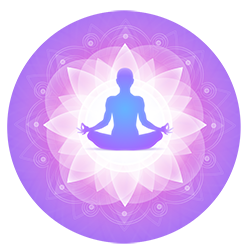The Yoga Sutras include a series of physical and mental practices to achieve lasting serenity (not surprisingly, the longer and more diligently it’s practiced, the better it works).
The practice is based on the belief that a) your consciousness is NOT a mental function; rather, it’s an entirely distinct part of you, and b) that the rest of you – from your thoughts to your toes – is constantly changing based on its energetic nature.
The Yoga Sutras include an integrated eight-limbed meditative practice to prove the discrete existence of your intangible consciousness; specifically, by completely quieting your mind. The theory is that because your consciousness never changes (remember: it’s your consciousness – aka your awareness or perception OF something – it’s the intangible part of you which objectively witnesses whatever is reflected in your tangible brain) – so, if there’s nothing on your mind to be conscious of, your consciousness becomes self-aware. Again, the purpose of the eight limbs is to learn to distinguish between your body/mind and your consciousness – and ultimately identify with the latter. In essence, the practice is about seeing and acting from a point of objectivity and balance. THAT will change your life.
The eight-fold path to identify with the intangible part of you includes two indirect and three direct preparatory steps, and three actual seated meditation practices to refine and ultimately empty your mind:
• Indirect preparation (~70% of preparatory text): two limbs addressing personal conduct
• Direct preparation (each ~10% of the preparatory text): three limbs addressing posture, breathing, and concentration, respectively
• Actual meditation: three limbs on meditation, or refining the content of your mind
MSRY’s intro course focuses on the three direct preparatory steps as these physically and mentally settling steps offer the greatest immediate reward for the least effort – think: “tricks” you can use for a lifetime to reduce stress!
While our conduct has the greatest effect on our state of mind, the initial two most important, indirect preparatory steps aren’t covered in MSRY’s intro course because it’s assumed that we all know right from wrong (these two indirect steps were a precursor to the Ten Commandments: don’t harm, lie, steal, etc.) – in short, Karma’s a bitch so act accordingly!




